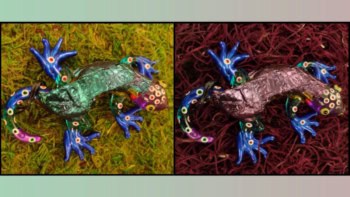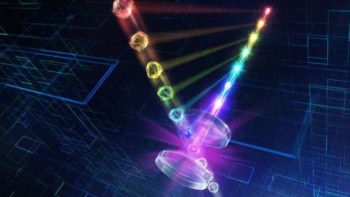Video transcript
00:00–00:08
It’s fair to say there has been confusion about how ultraviolet light can help in the COVID-19 pandemic.
00:09–00:17
Sadly, it’s obscured some of the genuine science, which could actually be very significant. So let’s try to clear up some of the misinformation.
00:19–00:30
Now, when it comes to UV light, we are most familiar with UVA and UVB – the bands of sunlight that filter through the atmosphere and make it to the Earth’s surface.
00:31–00:35
In moderate doses it’s good for us in a number of ways.
00:36–00:44
But overexposure can cause sunburn – or even cancer – so that’s why we slap on the suncream, or shelter under parasols.
00:45–01:00
Fortunately, the ozone layer filters out an even more dangerous band of sunlight known as UVC. If you exposed yourself to UVC, you would experience serious burns and damage to DNA.
01:01–01:12
But UVC is a double-edged sword. As well as damaging skin, it can also mangle the genetic material of viruses and bacteria, preventing them from reproducing.
01:13–01:27
Scientists have known for over a century about UV’s ability to disinfect. And for many years, UVC lamps have been used for sterilization in medical settings, food production and a number of other places.
01:28–01:37
During the COVID-19 outbreak in China, buses were even bathed in UV light overnight, to leave them clinically clean for the next day.
01:38–01:53
For these applications, UVC lamps are great. But they’re often big and unwieldy. And because of the high risk to humans, operators need to wear really hardcore safety equipment and go through specialized training.
01:53–02:02
But now, emerging research could prove to be a game-changer for UVC sterilization. Making it much more accessible.
02:03–02:16
Researchers have discovered that a specific wavelength of UVC light – 222 nm – could be much less dangerous to humans, while still lethal for viruses and bacteria.
02:17–02:21
Now think about that for a second. The implication is huge.
02:22–02:32
In theory, we could deploy 222 nm lights across the world to shield ourselves from coronaviruses, and a bunch of other invisible enemies.
02:34–02:49
But before you get too excited, there is a long way to go and many questions still remain. Crucially, this far-UVC light has so far only been tested on mice at short exposure times and single doses.
02:50–03:01
So clearly, much more research is needed to check its safety for humans, and its ability to damage SARS-CoV-2, the virus behind COVID-19 disease.
03:02–03:11
And even if it does work, we would still to develop new lighting technologies, that are practical for a variety of applications.
03:11–03:24
The most promising approach seems to be light-emitting diodes – LEDs. And several groups of physicists are already experimenting with different materials to develop far-UVC LEDs.
03:25–03:36
Even the most optimistic researchers would admit that it is unlikely the technology could be ready in time for the COVID-19 pandemic, even if there is a second wave.
03:36–03:51
But the number of zoonotic diseases – that’s diseases passing from animals to humans – has been on the increase in recent times. So these far-UVC LEDs could come to play a vital role in the next serious pandemic.
03:52–03:59
Find out more about UV light and sterilization in the June 2020 issue of Physics World.



